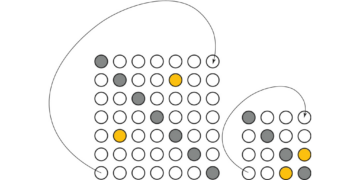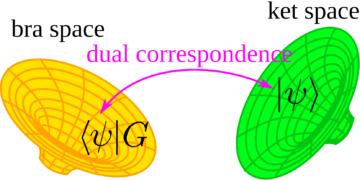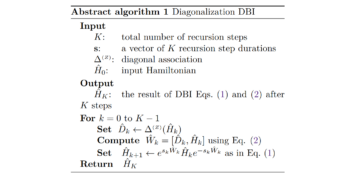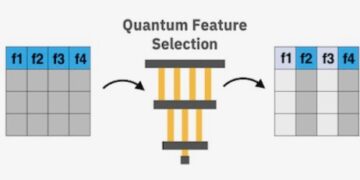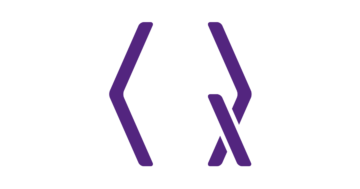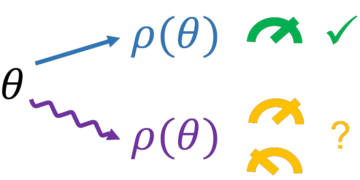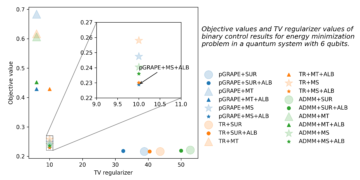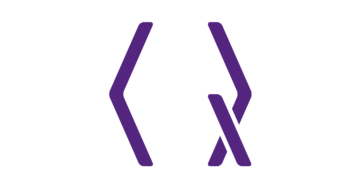Institute of Physics, École Polytechnique Fédérale de Lausanne (EPFL), CH-1015 Lausanne, Switzerland
Center for Quantum Science and Engineering, École Polytechnique Fédérale de Lausanne (EPFL), CH-1015 Lausanne, Switzerland
Find this paper interesting or want to discuss? Scite or leave a comment on SciRate.
Abstract
Simulating the dynamics of large quantum systems is a formidable yet vital pursuit for obtaining a deeper understanding of quantum mechanical phenomena. While quantum computers hold great promise for speeding up such simulations, their practical application remains hindered by limited scale and pervasive noise. In this work, we propose an approach that addresses these challenges by employing circuit knitting to partition a large quantum system into smaller subsystems that can each be simulated on a separate device. The evolution of the system is governed by the projected variational quantum dynamics (PVQD) algorithm, supplemented with constraints on the parameters of the variational quantum circuit, ensuring that the sampling overhead imposed by the circuit knitting scheme remains controllable. We test our method on quantum spin systems with multiple weakly entangled blocks each consisting of strongly correlated spins, where we are able to accurately simulate the dynamics while keeping the sampling overhead manageable. Further, we show that the same method can be used to reduce the circuit depth by cutting long-ranged gates.

Featured image: We evolve the state $|psi(varphi_{t-1})rangle$ by a time step $Delta t$ while keeping the structure of the ansatz fixed. This is achieved by optimising the variational parameters $varphi$ such that the fidelity between the evolved state $e^{-iHDelta t}|psi(varphi_{t-1})rangle$ and the ansatz $|psi(varphi)rangle$ is maximised. To measure the fidelity on the quantum devices, we cut the global quantum circuit into subcircuits using circuit knitting. This comes at the cost of a sampling overhead $omega(varphi)$ that depends on the variational parameters. In order to control the overhead, we project the parameters back into the subspace where $omega(varphi) leq tau$ for some threshold $tau$ after every optimisation step.
Popular summary
As the main contribution of our work, we modify a variational quantum time evolution algorithm (PVQD) by constraining the variational parameters to a subspace where the required sampling overhead remains below a manageable threshold. We show that through this constrained optimisation algorithm, we achieve high fidelities in the time evolution of quantum spin systems for realistic thresholds. The accuracy of the simulation can be controlled by tuning this new hyperparameter, allowing for optimal results given a fixed budget of total quantum resources.
► BibTeX data
► References
[1] Richard P. Feynman. “Simulating physics with computers”. International Journal of Theoretical Physics 21, 467–488 (1982).
https://doi.org/10.1007/BF02650179
[2] Abhinav Kandala, Antonio Mezzacapo, Kristan Temme, Maika Takita, Markus Brink, Jerry M. Chow, and Jay M. Gambetta. “Hardware-efficient variational quantum eigensolver for small molecules and quantum magnets”. Nature 549, 242–246 (2017).
https://doi.org/10.1038/nature23879
[3] A. Chiesa, F. Tacchino, M. Grossi, P. Santini, I. Tavernelli, D. Gerace, and S. Carretta. “Quantum hardware simulating four-dimensional inelastic neutron scattering”. Nature Physics 15, 455–459 (2019).
https://doi.org/10.1038/s41567-019-0437-4
[4] Frank Arute et al. “Hartree-fock on a superconducting qubit quantum computer”. Science 369, 1084–1089 (2020).
https://doi.org/10.1126/science.abb9811
[5] Frank Arute et al. “Observation of separated dynamics of charge and spin in the fermi-hubbard model” (2020). arXiv:2010.07965.
arXiv:2010.07965
[6] C. Neill et al. “Accurately computing the electronic properties of a quantum ring”. Nature 594, 508–512 (2021).
https://doi.org/10.1038/s41586-021-03576-2
[7] J. Zhang, G. Pagano, P. W. Hess, A. Kyprianidis, P. Becker, H. Kaplan, A. V. Gorshkov, Z. X. Gong, and C. Monroe. “Observation of a many-body dynamical phase transition with a 53-qubit quantum simulator”. Nature 551, 601–604 (2017).
https://doi.org/10.1038/nature24654
[8] James Dborin, Vinul Wimalaweera, F. Barratt, Eric Ostby, Thomas E. O’Brien, and A. G. Green. “Simulating groundstate and dynamical quantum phase transitions on a superconducting quantum computer”. Nature Communications 13, 5977 (2022).
https://doi.org/10.1038/s41467-022-33737-4
[9] Sepehr Ebadi, Tout T. Wang, Harry Levine, Alexander Keesling, Giulia Semeghini, Ahmed Omran, Dolev Bluvstein, Rhine Samajdar, Hannes Pichler, Wen Wei Ho, Soonwon Choi, Subir Sachdev, Markus Greiner, Vladan Vuletić, and Mikhail D. Lukin. “Quantum phases of matter on a 256-atom programmable quantum simulator”. Nature 595, 227–232 (2021).
https://doi.org/10.1038/s41586-021-03582-4
[10] Ehud Altman. “Many-body localization and quantum thermalization”. Nature Physics 14, 979–983 (2018).
https://doi.org/10.1038/s41567-018-0305-7
[11] Wibe A. de Jong, Kyle Lee, James Mulligan, Mateusz Płoskoń, Felix Ringer, and Xiaojun Yao. “Quantum simulation of nonequilibrium dynamics and thermalization in the schwinger model”. Phys. Rev. D 106, 054508 (2022).
https://doi.org/10.1103/PhysRevD.106.054508
[12] Youngseok Kim, Andrew Eddins, Sajant Anand, Ken Xuan Wei, Ewout van den Berg, Sami Rosenblatt, Hasan Nayfeh, Yantao Wu, Michael Zaletel, Kristan Temme, and Abhinav Kandala. “Evidence for the utility of quantum computing before fault tolerance”. Nature 618, 500–505 (2023).
https://doi.org/10.1038/s41586-023-06096-3
[13] Andrew M. Childs, Dmitri Maslov, Yunseong Nam, Neil J. Ross, and Yuan Su. “Toward the first quantum simulation with quantum speedup”. Proceedings of the National Academy of Sciences 115, 9456–9461 (2018).
https://doi.org/10.1073/pnas.1801723115
[14] Ryan Babbush, Craig Gidney, Dominic W. Berry, Nathan Wiebe, Jarrod McClean, Alexandru Paler, Austin Fowler, and Hartmut Neven. “Encoding electronic spectra in quantum circuits with linear t complexity”. Phys. Rev. X 8, 041015 (2018).
https://doi.org/10.1103/PhysRevX.8.041015
[15] Yunseong Nam and Dmitri Maslov. “Low-cost quantum circuits for classically intractable instances of the hamiltonian dynamics simulation problem”. npj Quantum Information 5, 44 (2019).
https://doi.org/10.1038/s41534-019-0152-0
[16] Mario Motta, Erika Ye, Jarrod R. McClean, Zhendong Li, Austin J. Minnich, Ryan Babbush, and Garnet Kin-Lic Chan. “Low rank representations for quantum simulation of electronic structure”. npj Quantum Information 7, 83 (2021).
https://doi.org/10.1038/s41534-021-00416-z
[17] Jay Gambetta. “Expanding the IBM Quantum roadmap to anticipate the future of quantum-centric supercomputing”. url: https://research.ibm.com/blog/ibm-quantum-roadmap-2025.
https://research.ibm.com/blog/ibm-quantum-roadmap-2025
[18] John Preskill. “Quantum Computing in the NISQ era and beyond”. Quantum 2, 79 (2018).
https://doi.org/10.22331/q-2018-08-06-79
[19] Sergey Bravyi, Graeme Smith, and John A. Smolin. “Trading classical and quantum computational resources”. Phys. Rev. X 6, 021043 (2016).
https://doi.org/10.1103/PhysRevX.6.021043
[20] Tianyi Peng, Aram W. Harrow, Maris Ozols, and Xiaodi Wu. “Simulating large quantum circuits on a small quantum computer”. Phys. Rev. Lett. 125, 150504 (2020).
https://doi.org/10.1103/PhysRevLett.125.150504
[21] Kosuke Mitarai and Keisuke Fujii. “Constructing a virtual two-qubit gate by sampling single-qubit operations”. New Journal of Physics 23, 023021 (2021).
https://doi.org/10.1088/1367-2630/abd7bc
[22] Kosuke Mitarai and Keisuke Fujii. “Overhead for simulating a non-local channel with local channels by quasiprobability sampling”. Quantum 5, 388 (2021).
https://doi.org/10.22331/q-2021-01-28-388
[23] Christophe Piveteau and David Sutter. “Circuit knitting with classical communication”. IEEE Transactions on Information TheoryPage 1–1 (2024).
https://doi.org/10.1109/tit.2023.3310797
[24] Zhuo Fan and Quan-lin Jie. “Cluster density matrix embedding theory for quantum spin systems”. Phys. Rev. B 91, 195118 (2015).
https://doi.org/10.1103/PhysRevB.91.195118
[25] Klaas Gunst, Sebastian Wouters, Stijn De Baerdemacker, and Dimitri Van Neck. “Block product density matrix embedding theory for strongly correlated spin systems”. Phys. Rev. B 95, 195127 (2017).
https://doi.org/10.1103/PhysRevB.95.195127
[26] Takeshi Yamazaki, Shunji Matsuura, Ali Narimani, Anushervon Saidmuradov, and Arman Zaribafiyan. “Towards the practical application of near-term quantum computers in quantum chemistry simulations: A problem decomposition approach” (2018). arXiv:1806.01305.
arXiv:1806.01305
[27] Max Rossmannek, Panagiotis Kl. Barkoutsos, Pauline J. Ollitrault, and Ivano Tavernelli. “Quantum HF/DFT-embedding algorithms for electronic structure calculations: Scaling up to complex molecular systems”. The Journal of Chemical Physics 154, 114105 (2021).
https://doi.org/10.1063/5.0029536
[28] Andrew Eddins, Mario Motta, Tanvi P. Gujarati, Sergey Bravyi, Antonio Mezzacapo, Charles Hadfield, and Sarah Sheldon. “Doubling the size of quantum simulators by entanglement forging”. PRX Quantum 3, 010309 (2022).
https://doi.org/10.1103/PRXQuantum.3.010309
[29] Patrick Huembeli, Giuseppe Carleo, and Antonio Mezzacapo. “Entanglement forging with generative neural network models” (2022). arXiv:2205.00933.
arXiv:2205.00933
[30] Paulin de Schoulepnikoff, Oriel Kiss, Sofia Vallecorsa, Giuseppe Carleo, and Michele Grossi. “Hybrid ground-state quantum algorithms based on neural schrödinger forging” (2023). arXiv:2307.02633.
arXiv:2307.02633
[31] Abigail McClain Gomez, Taylor L. Patti, Anima Anandkumar, and Susanne F. Yelin. “Near-term distributed quantum computation using mean-field corrections and auxiliary qubits” (2023). arXiv:2309.05693.
arXiv:2309.05693
[32] Stefano Barison, Filippo Vicentini, and Giuseppe Carleo. “Embedding classical variational methods in quantum circuits” (2023). arXiv:2309.08666.
arXiv:2309.08666
[33] Xiao Yuan, Jinzhao Sun, Junyu Liu, Qi Zhao, and You Zhou. “Quantum simulation with hybrid tensor networks”. Phys. Rev. Lett. 127, 040501 (2021).
https://doi.org/10.1103/PhysRevLett.127.040501
[34] Jinzhao Sun, Suguru Endo, Huiping Lin, Patrick Hayden, Vlatko Vedral, and Xiao Yuan. “Perturbative quantum simulation”. Phys. Rev. Lett. 129, 120505 (2022).
https://doi.org/10.1103/PhysRevLett.129.120505
[35] J. Eisert, M. Cramer, and M. B. Plenio. “Colloquium: Area laws for the entanglement entropy”. Rev. Mod. Phys. 82, 277–306 (2010).
https://doi.org/10.1103/RevModPhys.82.277
[36] Ulrich Schollwöck. “The density-matrix renormalization group in the age of matrix product states”. Annals of Physics 326, 96–192 (2011).
https://doi.org/10.1016/j.aop.2010.09.012
[37] Jin-Guo Liu, Yi-Hong Zhang, Yuan Wan, and Lei Wang. “Variational quantum eigensolver with fewer qubits”. Phys. Rev. Res. 1, 023025 (2019).
https://doi.org/10.1103/PhysRevResearch.1.023025
[38] Sam McArdle, Suguru Endo, Alán Aspuru-Guzik, Simon C. Benjamin, and Xiao Yuan. “Quantum computational chemistry”. Rev. Mod. Phys. 92, 015003 (2020).
https://doi.org/10.1103/RevModPhys.92.015003
[39] G. Kotliar, S. Y. Savrasov, K. Haule, V. S. Oudovenko, O. Parcollet, and C. A. Marianetti. “Electronic structure calculations with dynamical mean-field theory”. Reviews of Modern Physics 78, 865–951 (2006).
https://doi.org/10.1103/revmodphys.78.865
[40] Qiming Sun and Garnet Kin-Lic Chan. “Quantum embedding theories”. Accounts of Chemical Research 49, 2705–2712 (2016).
https://doi.org/10.1021/acs.accounts.6b00356
[41] Stefano Barison, Filippo Vicentini, and Giuseppe Carleo. “An efficient quantum algorithm for the time evolution of parameterized circuits”. Quantum 5, 512 (2021).
https://doi.org/10.22331/q-2021-07-28-512
[42] P. A. M. Dirac. “Note on exchange phenomena in the thomas atom”. Mathematical Proceedings of the Cambridge Philosophical Society 26, 376–385 (1930).
https://doi.org/10.1017/S0305004100016108
[43] Jacov Frenkel. “Wave mechanics: Advanced general theory”. London: Oxford University Press. (1934).
https://doi.org/10.1017/s0025557200203604
[44] A.D. McLachlan. “A variational solution of the time-dependent schrodinger equation”. Molecular Physics 8, 39–44 (1964).
https://doi.org/10.1080/00268976400100041
[45] Xiao Yuan, Suguru Endo, Qi Zhao, Ying Li, and Simon C. Benjamin. “Theory of variational quantum simulation”. Quantum 3, 191 (2019).
https://doi.org/10.22331/q-2019-10-07-191
[46] Julien Gacon, Jannes Nys, Riccardo Rossi, Stefan Woerner, and Giuseppe Carleo. “Variational quantum time evolution without the quantum geometric tensor”. Physical Review Research 6 (2024).
https://doi.org/10.1103/physrevresearch.6.013143
[47] R. Cleve, A. Ekert, C. Macchiavello, and M. Mosca. “Quantum algorithms revisited”. Proceedings of the Royal Society of London. Series A: Mathematical, Physical and Engineering Sciences 454, 339–354 (1998).
https://doi.org/10.1098/rspa.1998.0164
[48] Vojtěch Havlíček, Antonio D. Córcoles, Kristan Temme, Aram W. Harrow, Abhinav Kandala, Jerry M. Chow, and Jay M. Gambetta. “Supervised learning with quantum-enhanced feature spaces”. Nature 567, 209–212 (2019).
https://doi.org/10.1038/s41586-019-0980-2
[49] M. Cerezo, Akira Sone, Tyler Volkoff, Lukasz Cincio, and Patrick J. Coles. “Cost function dependent barren plateaus in shallow parametrized quantum circuits”. Nature Communications 12, 1791 (2021).
https://doi.org/10.1038/s41467-021-21728-w
[50] Tobias Haug and M. S. Kim. “Optimal training of variational quantum algorithms without barren plateaus” (2021). arXiv:2104.14543.
arXiv:2104.14543
[51] Lukas Schmitt, Christophe Piveteau, and David Sutter. “Cutting circuits with multiple two-qubit unitaries” (2023). arXiv:2312.11638.
arXiv:2312.11638
[52] Christian Ufrecht, Laura S. Herzog, Daniel D. Scherer, Maniraman Periyasamy, Sebastian Rietsch, Axel Plinge, and Christopher Mutschler. “Optimal joint cutting of two-qubit rotation gates” (2023). arXiv:2312.09679.
arXiv:2312.09679
[53] Diederik P. Kingma and Jimmy Ba. “Adam: A method for stochastic optimization” (2017). arXiv:1412.6980.
arXiv:1412.6980
[54] Michael A. Nielsen and Isaac L. Chuang. “Quantum computation and quantum information: 10th anniversary edition”. Cambridge University Press. (2010).
https://doi.org/10.1017/CBO9780511976667
[55] Sajant Anand, Kristan Temme, Abhinav Kandala, and Michael Zaletel. “Classical benchmarking of zero noise extrapolation beyond the exactly-verifiable regime” (2023). arXiv:2306.17839.
arXiv:2306.17839
[56] Alberto Peruzzo, Jarrod McClean, Peter Shadbolt, Man-Hong Yung, Xiao-Qi Zhou, Peter J. Love, Alán Aspuru-Guzik, and Jeremy L. O’Brien. “A variational eigenvalue solver on a photonic quantum processor”. Nature Communications 5, 4213 (2014).
https://doi.org/10.1038/ncomms5213
[57] Tuhin Khare, Ritajit Majumdar, Rajiv Sangle, Anupama Ray, Padmanabha Venkatagiri Seshadri, and Yogesh Simmhan. “Parallelizing quantum-classical workloads: Profiling the impact of splitting techniques” (2023). arXiv:2305.06585.
arXiv:2305.06585
[58] Sebastian Brandhofer, Ilia Polian, and Kevin Krsulich. “Optimal partitioning of quantum circuits using gate cuts and wire cuts” (2023). arXiv:2308.09567.
arXiv:2308.09567
[59] Daniele Cuomo, Marcello Caleffi, and Angela Sara Cacciapuoti. “Towards a distributed quantum computing ecosystem”. IET Quantum Communication 1, 3–8 (2020).
https://doi.org/10.1049/iet-qtc.2020.0002
[60] Jeff Bezanson, Alan Edelman, Stefan Karpinski, and Viral B Shah. “Julia: A fresh approach to numerical computing”. SIAM Review 59, 65–98 (2017).
https://doi.org/10.1137/141000671
[61] Xiu-Zhe Luo, Jin-Guo Liu, Pan Zhang, and Lei Wang. “Yao.jl: Extensible, Efficient Framework for Quantum Algorithm Design”. Quantum 4, 341 (2020).
https://doi.org/10.22331/q-2020-10-11-341
[62] Gian Gentinetta, Friederike Metz, and Giuseppe Carleo. “Code for manuscript Overhead-constrained circuit knitting for variational quantum dynamics”. Github (2024).
https://doi.org/10.5281/zenodo.10829066
Cited by
[1] Travis L. Scholten, Carl J. Williams, Dustin Moody, Michele Mosca, William Hurley, William J. Zeng, Matthias Troyer, and Jay M. Gambetta, “Assessing the Benefits and Risks of Quantum Computers”, arXiv:2401.16317, (2024).
[2] Julien Gacon, “Scalable Quantum Algorithms for Noisy Quantum Computers”, arXiv:2403.00940, (2024).
The above citations are from SAO/NASA ADS (last updated successfully 2024-03-21 17:07:41). The list may be incomplete as not all publishers provide suitable and complete citation data.
Could not fetch Crossref cited-by data during last attempt 2024-03-21 17:07:39: Could not fetch cited-by data for 10.22331/q-2024-03-21-1296 from Crossref. This is normal if the DOI was registered recently.
This Paper is published in Quantum under the Creative Commons Attribution 4.0 International (CC BY 4.0) license. Copyright remains with the original copyright holders such as the authors or their institutions.
- SEO Powered Content & PR Distribution. Get Amplified Today.
- PlatoData.Network Vertical Generative Ai. Empower Yourself. Access Here.
- PlatoAiStream. Web3 Intelligence. Knowledge Amplified. Access Here.
- PlatoESG. Carbon, CleanTech, Energy, Environment, Solar, Waste Management. Access Here.
- PlatoHealth. Biotech and Clinical Trials Intelligence. Access Here.
- Source: https://quantum-journal.org/papers/q-2024-03-21-1296/
- :is
- :not
- :where
- ][p
- $UP
- 012
- 07
- 09
- 1
- 10
- 10th
- 11
- 12
- 125
- 127
- 13
- 14
- 15%
- 16
- 17
- 1791
- 19
- 1930
- 1934
- 1998
- 2%
- 20
- 2006
- 2010
- 2011
- 2014
- 2015
- 2016
- 2017
- 2018
- 2019
- 2020
- 2021
- 2022
- 2023
- 2024
- 21
- 22
- 23
- 24
- 25
- 26
- 27
- 28
- 29
- 30
- 31
- 32
- 33
- 34
- 35%
- 36
- 369
- 39
- 4
- 40
- 41
- 42
- 45
- 46
- 48
- 49
- 5
- 50
- 51
- 52
- 54
- 55
- 58
- 6
- 60
- 62
- 7
- 8
- 9
- 91
- a
- Able
- above
- ABSTRACT
- Academy
- access
- Accounts
- accuracy
- accurately
- Achieve
- achieved
- addresses
- advanced
- affiliations
- After
- age
- ahmed
- AL
- Alan
- Alexander
- algorithm
- algorithms
- All
- Allowing
- allows
- altman
- an
- and
- Andrew
- Anniversary
- anticipate
- Application
- approach
- ARE
- AREA
- AS
- Assessing
- At
- atom
- attempt
- austin
- author
- authors
- auxiliary
- b
- back
- barren
- based
- BE
- before
- below
- benchmarking
- benefits
- Benjamin
- berry
- between
- Beyond
- Blocks
- Break
- brink
- budget
- by
- calculations
- cambridge
- CAN
- Carl
- challenges
- chan
- Channel
- channels
- charge
- Charles
- chemical
- chemistry
- chiesa
- chow
- christian
- Christopher
- circuit
- circuit knitting
- circuits
- code
- comes
- comment
- Commons
- Communication
- Communications
- complete
- complex
- complexity
- composed
- computation
- computational
- computer
- computers
- computing
- Consisting
- constrained
- constraints
- contribution
- control
- controlled
- copyright
- Corrections
- correlated
- Cost
- could
- Craig
- Cut
- cuts
- cutting
- Daniel
- data
- David
- de
- deeper
- Den
- density
- dependent
- depends
- depth
- Design
- device
- Devices
- different
- discuss
- distributed
- distributing
- distribution
- dominic
- due
- during
- dynamics
- e
- E&T
- each
- ecosystem
- edition
- efficient
- Electronic
- embedding
- employing
- Engineering
- ensuring
- entanglement
- equation
- Era
- eric
- Erika
- Ether (ETH)
- Every
- evolution
- evolve
- evolved
- exchange
- exponentially
- fan
- fault
- Feature
- fewer
- fidelity
- First
- fixed
- For
- Forging
- formidable
- Framework
- frank
- fresh
- from
- function
- further
- future
- gate
- Gates
- General
- generative
- GitHub
- giuseppe
- given
- Global
- Gomez
- governed
- great
- Green
- Group
- Growing
- gujarati
- Hardware
- harvard
- High
- hold
- holders
- HTTPS
- Hybrid
- i
- IBM
- ibm quantum
- IEEE
- if
- image
- Impact
- imposed
- in
- information
- instances
- institutions
- interesting
- International
- into
- james
- JavaScript
- jeremy
- jimmy
- JL
- John
- joint
- journal
- keeping
- Kim
- kiss
- known
- kyle
- large
- Last
- Laws
- learning
- Leave
- Lee
- levine
- li
- License
- Limited
- lin
- linear
- List
- local
- Localization
- locally
- London
- love
- Magnets
- Main
- manageable
- mar
- Mario
- mathematical
- Matrix
- Matter
- matthias
- max
- max-width
- May..
- mcclean
- measure
- measurements
- mechanical
- mechanics
- method
- methods
- Michael
- mikhail
- model
- models
- Modern
- modify
- molecular
- Month
- multiple
- Nam
- nathan
- National
- Nature
- network
- networks
- Neural
- neural network
- New
- Noise
- normal
- number
- numerical
- obtaining
- of
- on
- onto
- open
- Operations
- optimal
- optimising
- optimization
- or
- order
- original
- our
- over
- overhead
- Oxford
- oxford university
- pages
- PAN
- Paper
- parameters
- parametrized
- patrick
- Peter
- phase
- phases
- Phases of Matter
- philosophical
- physical
- Physics
- plato
- Plato Data Intelligence
- PlatoData
- Practical
- press
- Problem
- Proceedings
- Processor
- Product
- profiling
- programmable
- project
- projected
- promise
- properties
- propose
- provide
- published
- publisher
- publishers
- pursuit
- Qi
- Quantum
- quantum algorithms
- Quantum Computer
- quantum computers
- quantum computing
- quantum information
- quantum systems
- Qubit
- qubits
- R
- rank
- RAY
- real-time
- realistic
- recently
- reduce
- references
- regime
- registered
- remains
- representations
- required
- research
- Resources
- Results
- review
- Reviews
- Richard
- Ring
- risks
- roadmap
- royal
- Ryan
- s
- Sam
- same
- scalable
- Scale
- scales
- scaling
- scheme
- Science
- SCIENCES
- separate
- Series
- Series A
- several
- shallow
- show
- siam
- Simon
- simulate
- simulation
- simulations
- simulator
- Size
- small
- smaller
- smith
- Society
- solution
- some
- spaces
- Spin
- spins
- State
- States
- stefan
- Step
- strongly
- structure
- Successfully
- such
- suitable
- Sun
- Supercomputing
- system
- Systems
- T
- taylor
- technique
- techniques
- test
- that
- The
- The Future
- The State
- their
- theoretical
- theory
- These
- this
- thomas
- threshold
- Through
- time
- Title
- to
- tolerance
- Total
- Training
- Transactions
- transition
- transitions
- tuning
- tyler
- under
- understanding
- university
- updated
- URL
- used
- using
- utility
- van
- viral
- Virtual
- vital
- volume
- W
- wang
- want
- was
- we
- while
- william
- Williams
- Wire
- with
- without
- Work
- wu
- X
- xiao
- ye
- year
- yet
- YING
- you
- Yuan
- zephyrnet
- zero
- zhang
- Zhao

